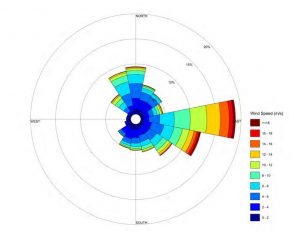A recent Council-sponsored report found that wind and waves at Hinchinbrook Entrance may be under reported as observed by the Seal Rocks weather buoy.
Researchers from Tetra Tech analyzed wind and wave data to better define weather conditions at the Entrance, as well as how these conditions might affect rescue operations by the escort tugs. To do this, researchers looked at the frequency and duration of weather events when the Entrance was closed to laden tankers.
Average closure conditions

Wave height alone was found to be the cause of most of the closures, occurring 10 to 26 times a year on average. Average wave height during closures was over 17 feet and the highest recorded wave was over 26 feet. Wind speed closes the Entrance one to three times annually, as do closures for both wind and waves. Winds average just over 54 miles per hour during closure and the highest recorded wind speed was over 61 miles per hour.
Closures for winds typically last less than two hours, while waves close the Entrance for an average of just over six hours.
Seal Rocks buoy’s data may not be precise
Researchers also compared the data collected from the Seal Rocks buoy to other close-by weather stations. During most conditions, they found that wind speeds may be over reported, meaning actual wind speeds are slower, compared to nearby buoys. However, the researchers added that during the highest wind speeds, buoys may be tilted, causing under reporting, but that this would need further study.
Wave heights at Seal Rocks may be under reported, meaning actual wave heights could be higher than the data shows.
For more information:
The Council studies and monitors ocean and weather conditions to ensure the best, most scientifically accurate advice on a safe and effective spill prevention and response system in accordance with their OPA 90 mandate.
Read the full report on our website:
More information about our weather monitoring: